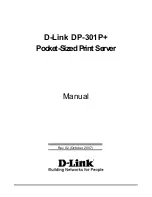
234
Glossary
processor
— A computer chip that interprets and executes program instructions.
Sometimes the processor is referred to as the CPU (central processing unit).
PS/2
— personal system/2 — A type of connector for attaching a PS/2-compatible
keyboard, mouse, or keypad.
PXE
— pre-boot execution environment — A WfM (Wired for Management)
standard that allows networked computers that do not have an operating system to be
configured and started remotely.
R
RAID
— redundant array of independent disks — A method of providing data
redundancy. Some common implementations of RAID include RAID 0, RAID 1,
RAID 5, RAID 10, and RAID 50.
RAM
— random-access memory — The primary temporary storage area for program
instructions and data. Any information stored in RAM is lost when you shut down your
computer.
readme file
— A text file included with a software package or hardware product.
Typically, readme files provide installation information and describe new product
enhancements or corrections that have not yet been documented.
read-only
— Data and/or files you can view but cannot edit or delete. A file can have
read-only status if:
• It resides on a physically write-protected floppy disk, CD, or DVD.
• It is located on a network in a directory and the system administrator has assigned
rights only to specific individuals.
refresh rate
— The frequency, measured in Hz, at which your screen's horizontal lines
are recharged (sometimes also referred to as its
vertical frequency
). The higher the
refresh rate, the less video flicker can be seen by the human eye.
resolution
— The sharpness and clarity of an image produced by a printer or displayed
on a monitor. The higher the resolution, the sharper the image.
RFI
— radio frequency interference — Interference that is generated at typical radio
frequencies, in the range of 10 kHz to 100,000 MHz. Radio frequencies are at the
lower end of the electromagnetic frequency spectrum and are more likely to have
interference than the higher frequency radiations, such as infrared and light.
ROM
— read-only memory — Memory that stores data and programs that cannot be
deleted or written to by the computer. ROM, unlike RAM, retains its contents after
you shut down your computer. Some programs essential to the operation of your
computer reside in ROM.
book.book Page 234 Wednesday, September 16, 2009 11:12 AM
Summary of Contents for Vostro 1400
Page 1: ...w w w d e l l c o m s u p p o r t d e l l c o m Dell Vostro 1400 Owner s Manual Model PP26L ...
Page 14: ...14 Contents Glossary 223 Index 241 ...
Page 22: ...22 Finding Information ...
Page 36: ...36 About Your Computer ...
Page 54: ...54 Using the Keyboard and Touch Pad ...
Page 66: ...66 Using the Optional Camera ...
Page 92: ...92 Using Multimedia ...
Page 96: ...96 Using ExpressCards ...
Page 110: ...110 Setting Up and Using Networks ...
Page 114: ...114 Securing Your Computer ...
Page 190: ...190 Adding and Replacing Parts ...
Page 192: ...192 Dell QuickSet Features ...
Page 202: ...202 Getting Help ...
Page 212: ...212 Specifications ...
Page 222: ...222 Appendix ...
Page 240: ...240 Glossary ...















































